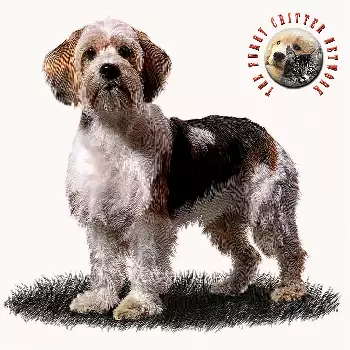The Flanders Hound was developed specifically as a cattle driving dog, with the primary responsibility of moving livestock from farm to pasture and eventually to market. This fundamental function shaped every aspect of the breed's physical and mental characteristics, creating dogs capable of working independently over long distances while maintaining control over large, potentially dangerous livestock. Their compact, powerful build provided the strength necessary to influence cattle movement without the excessive size that might limit endurance.
In their traditional role, these dogs demonstrated remarkable versatility in livestock management. They could work closely with farmers to sort cattle, drive herds across difficult terrain, and maintain control during the stressful process of bringing animals to market towns. The breed's natural ability to read livestock behavior and respond appropriately to changing situations made them invaluable partners in an era when cattle represented significant economic investment for farming families.
Beyond their primary herding duties, Flanders Hounds served multiple functions on Belgian farms. Their protective instincts and natural wariness of strangers made them effective property guardians, alerting to intruders while deterring theft of valuable livestock. During both World Wars, these dogs found unexpected roles as poacher's companions, using their tracking abilities and knowledge of local terrain to help provide food for struggling families.
The breed's hunting capabilities, particularly for deer and wild boar, represented an important secondary function that helped sustain their popularity during peacetime. Their compact size, strong scenting ability, and determination made them effective partners for hunters pursuing large game in the dense forests of the Ardennes region. This hunting heritage contributed to their development of strong prey drive and tracking instincts that remain characteristic of the breed today.
Modern applications of the Flanders Hound's working abilities have expanded beyond traditional farming roles. Their intelligence, trainability, and strong work ethic make them suitable for various contemporary working roles including search and rescue operations, where their determination and scenting ability prove valuable. Their compact size and weather-resistant coat make them practical working dogs in challenging environmental conditions.
In therapeutic and assistance roles, the breed's calm temperament and strong bonding with handlers show promise, though their protective instincts require careful evaluation and training. Their natural tendency to work closely with humans, combined with their intelligence and eagerness to please, creates potential for expansion into service dog roles where their size and temperament are appropriate.
Contemporary family roles for the Flanders Hound should acknowledge their need for purposeful activity. These dogs thrive when given responsibilities that engage their working instincts, whether through formal training activities, organized dog sports, or practical tasks around the home. Their ideal modern role combines their historical functions with contemporary lifestyle demands, creating partnerships where their intelligence and loyalty can flourish while meeting their need for meaningful work.

